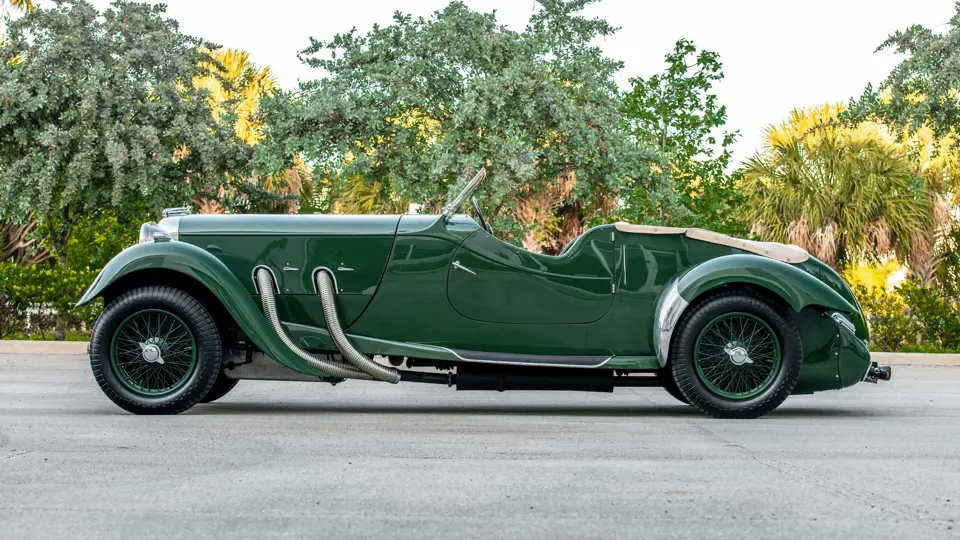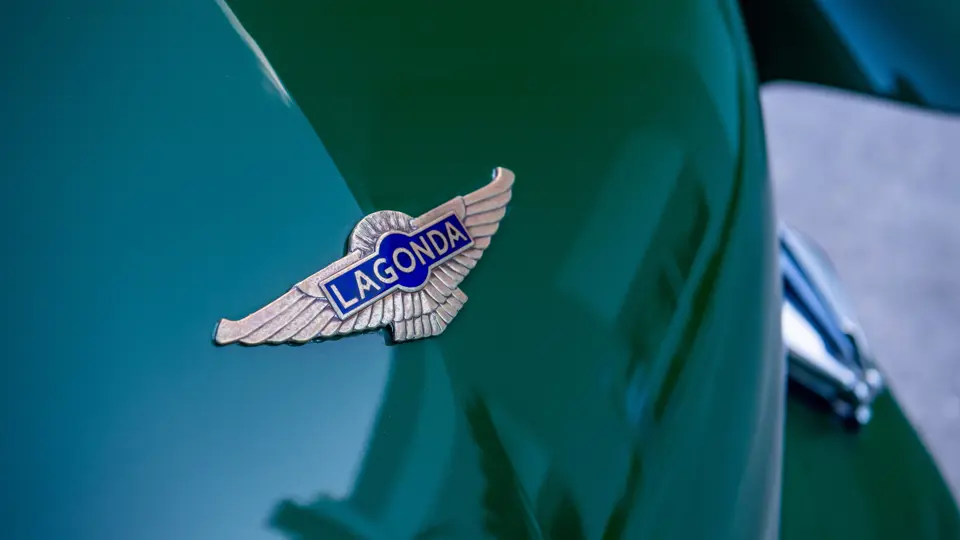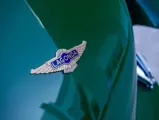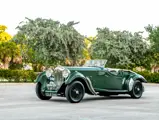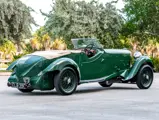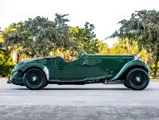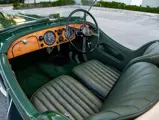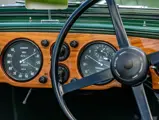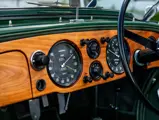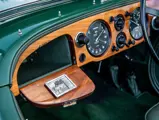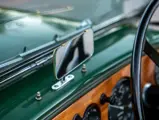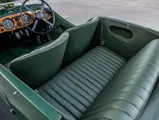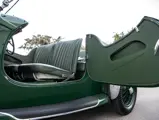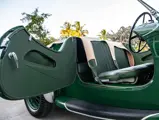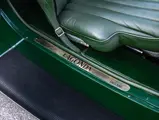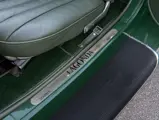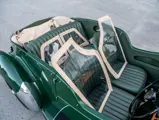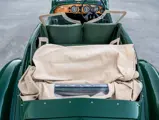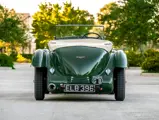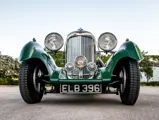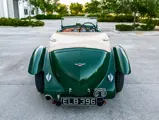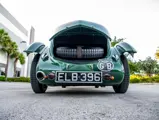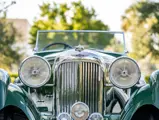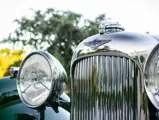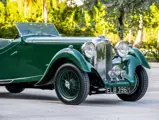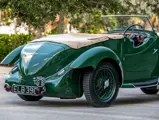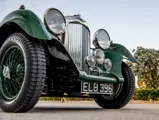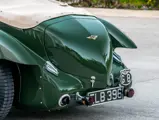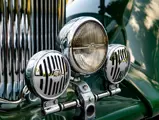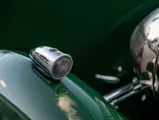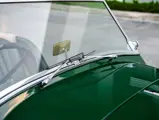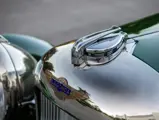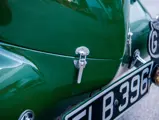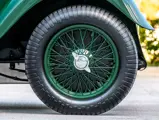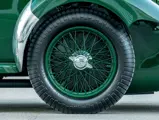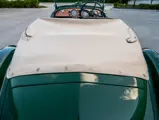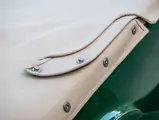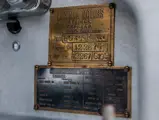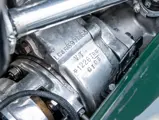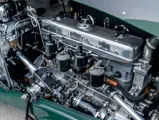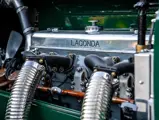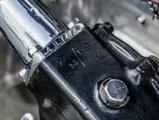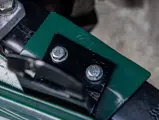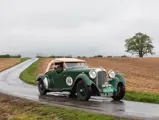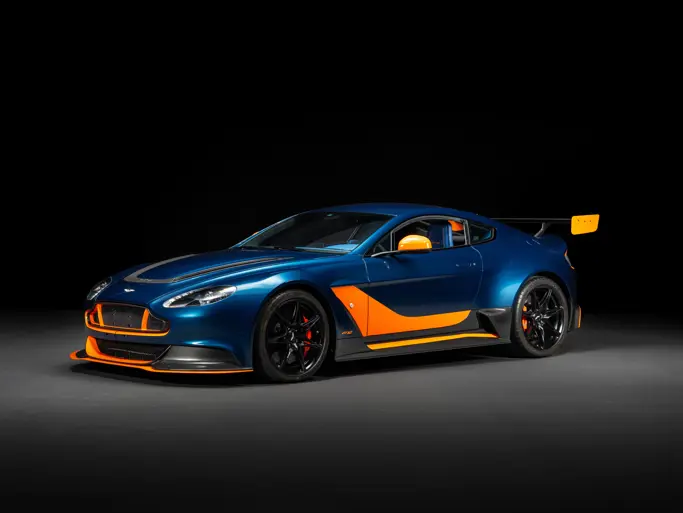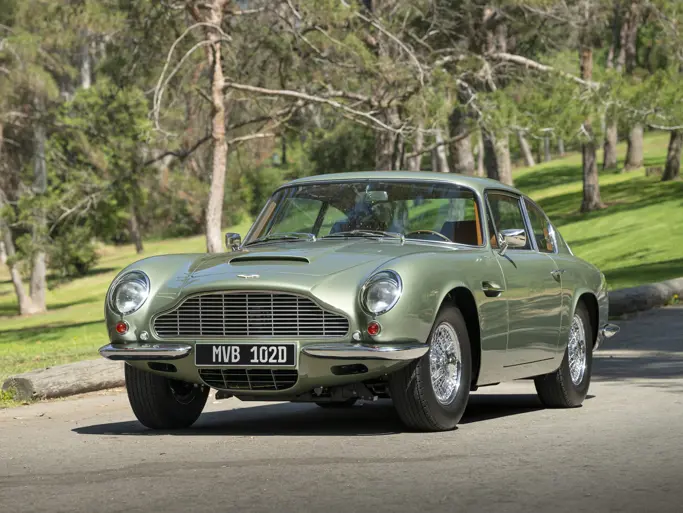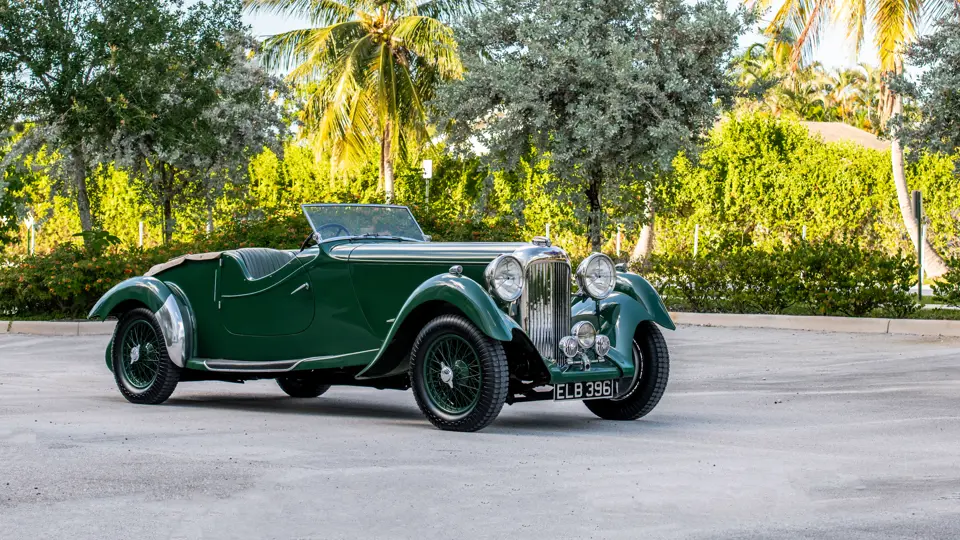
1937 Lagonda LG45 Rapide
{{lr.item.text}}
$600,000 - $700,000 USD | Not Sold
{{bidding.lot.reserveStatusFormatted}}
- Among the most accomplished and attractive four-seat tourers of the pre-war era
- One of just 25 examples believed to have been built
- Subject to extensive restoration work between 2013 and 2015
- Powered by a 4,467-cc Meadows straight-six engine mated to a four-speed manual gearbox
- Accompanied by a copy of its original factory order form
- Previously exhibited at the Pebble Beach Concours d’Elegance
Among the dark-colored, sober saloons of pre-war Britain, the striking Lagonda LG45 Rapide—with its sweeping lines, squared-off radiator, gleaming outside exhausts, and beautifully sculpted boat-tail rear end—must have looked utterly outrageous. Styled by Frank Feeley—who would go on to mastermind the Aston Martin DB2—the car was bold and beautiful, quick while standing still, and rarer than almost anything else on the road. That something so pretty and special would come from the firm’s dank and dilapidated tin-roofed sheds on the banks of a black River Thames in Staines only added to the allure.
This incredible car may not have been built had fate been different. As the clouds of war began to gather over Europe in 1935, Lagonda was in a parlous state. Finances in ruin, the company almost fell into the hands of great rival Rolls-Royce. And it would have, were it not for the intervention of Alan Good and former racing driver Dick Watney. Good’s bid saved the company, while Watney’s direction would steer the firm’s engineers and draftsmen to strive for greatness. W.O. Bentley also joined Lagonda, bringing with him a number of gifted craftsmen from Derby. Under his supervision, the M45 became the LG45—a true rival to the great luxury machines of the day that now benefited from a centralized lubrication system and more usable synchromesh gearbox.
Watney saw something great in the LG45 and quickly commissioned a more sporting, focused version that would prove irresistible to wealthy playboys of the day. Frank Feeley, who had been at the company since he was just 14, was encouraged to be bold with his design, creating flamboyant factory coachwork that would adorn each of the 25 cars that were built. Based on the same chassis as the LG45, the Rapide was powered by the tried-and-tested 4,467-cubic-centimeter six-cylinder Meadows engine—a variant of the mill that had driven the firm to outright victory at Le Mans in 1935—though in "Sanction 3" trim, it benefitted from a number of improvements masterminded by Bentley. Now breathing more freely through a much-improved exhaust system, the engine was also markedly more potent thanks to an increase in compression ratio to 7:1—or 7.5:1 when paired with high-octane petrol—and placed the car among just a handful of contemporary models capable of exceeding 100 mph.
The Rapide broke cover in September 1936, just six months after the company changed hands, and a short production run resulted in just 25 examples being built. Among them was chassis 12267R—the 24th to leave the Staines Works—which was ordered on 23 July 1937 and delivered to its first owner three months later. Beautifully finished in green with a complementary green leather interior, fawn soft-top, and polished walnut woodwork, the car was supplied by London’s sole Lagonda distributor, Keevil & March of Berkeley Square, and wore the registration number “ELB 396.” The car was sold new to London, later passing through the hands of a Bristol-based industrialist before returning to the capital and taking up residence in Hampstead. Works Service Department records note the replacement of the hood, tonneau, and side screens with new mohair items in 1951, along with the repair and strengthening of the rear body brackets.
In 1956, the Lagonda was bought by a doctor based in Cambridge, and it remained with the family until 1984. Its next owner would commission a full restoration, including a color change to red over a cream leather interior. Shortly after its completion, the car was acquired by noted US collector George Chilberg, who went on to show the Lagonda at the Pebble Beach Concours d’Elegance in 1999 and the Newport Beach Concours in 2006; he kept the car for almost three decades. In 2013, it was sold again, appearing at the Amelia Island Concours d’Elegance before being repatriated to the United Kingdom, where the Rapide was reunited with its original registration number.
Following its return to home shores, the Lagonda was treated to an extensive mechanical and cosmetic refresh. The car was refinished in its original green by Moto Technique Ltd at a cost of more than £39,000, and retrimmed in Connolly hide by O’Rourke Coachtrimmers, with an accompanying invoice for more than £37,000. Meanwhile, between November 2013 and April 2015, some £50,000 was spent with marque specialist Bishopgrey, accounting for extensive mechanical and body repairs and finishing, after which the car was campaigned in the 2015 Flying Scotsman Rally.
Today, this magnificent Lagonda LG45 Rapide presents beautifully in its original color scheme of matching green with a fawn mohair hood. It exhibits commanding road presence and can easily keep up with modern traffic. Flick the ignition switch on and, when pressing the starter, the straight-six fires to life with a lovely exhaust note. Engaging, but certainly not difficult, to drive, gear changes are direct, while copious torque ensures that you are never left underequipped in any gear.
Surely among the finest examples of its type, this hugely appealing four-seat tourer combines timeless elegance with true 100-mph performance—a perfect machine to take up the cudgels in historic rallies, to challenge for honors at top concours events, or just for a scenic backroads trip to the pub.




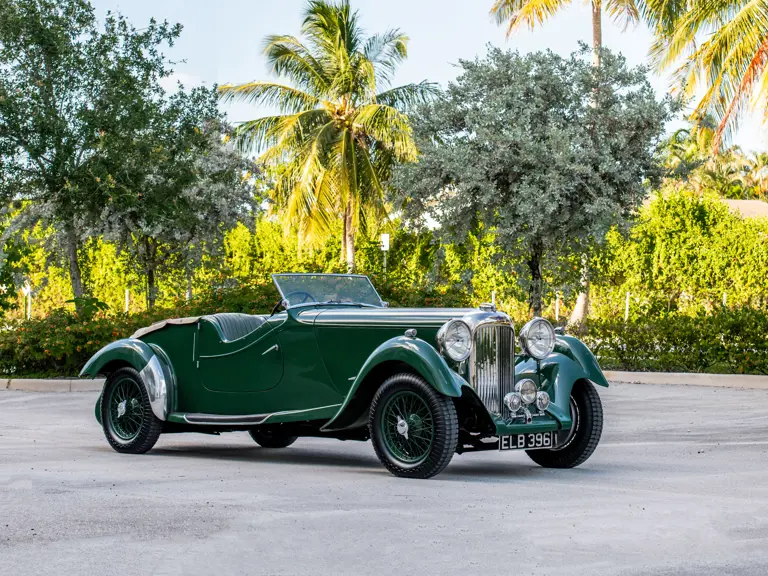
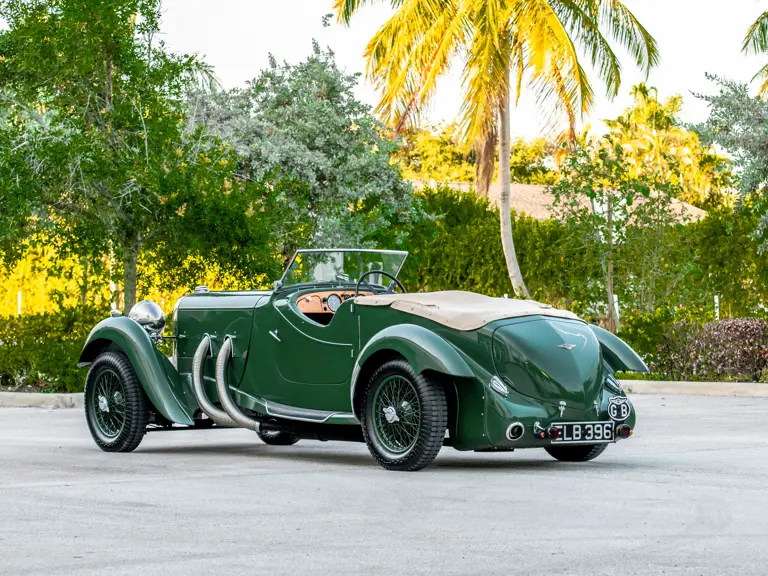
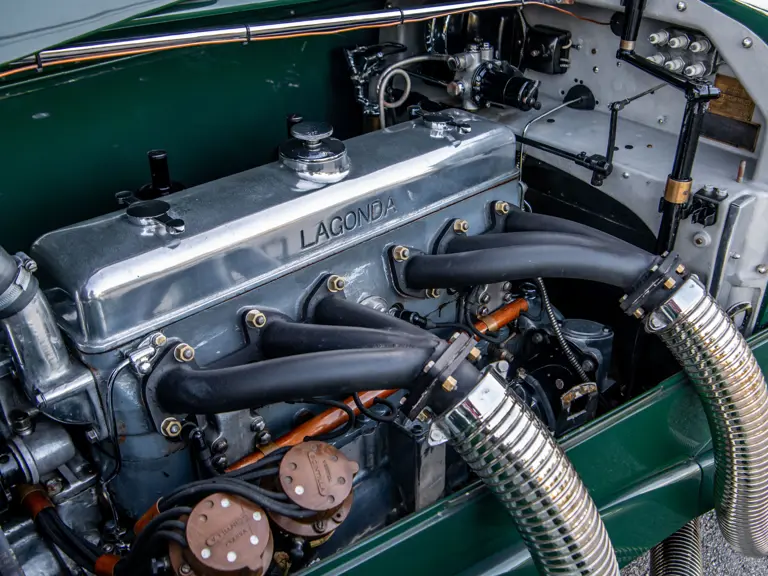
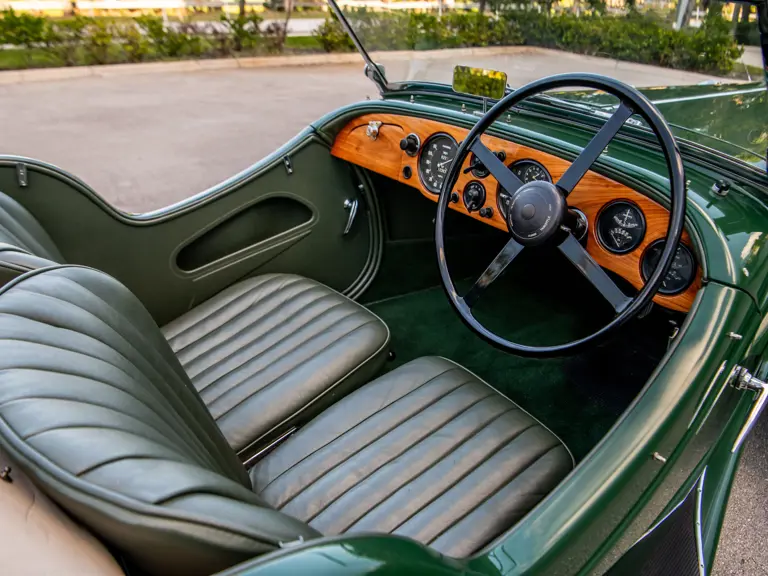
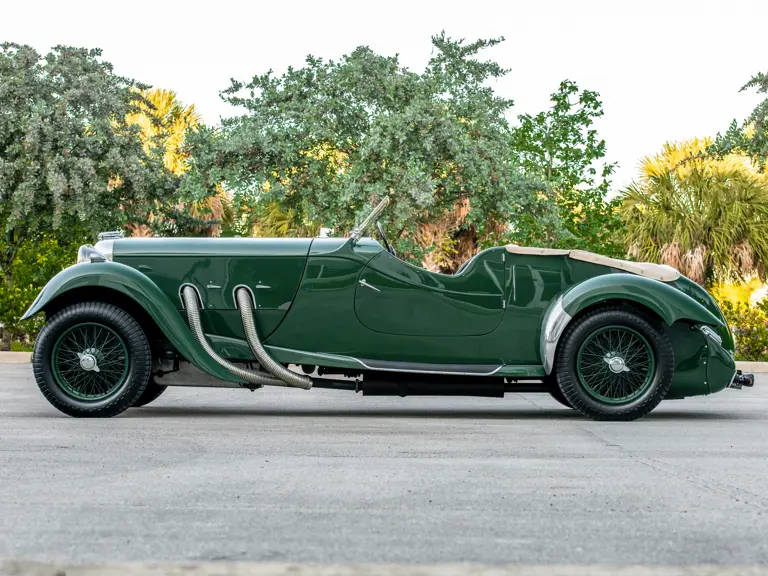

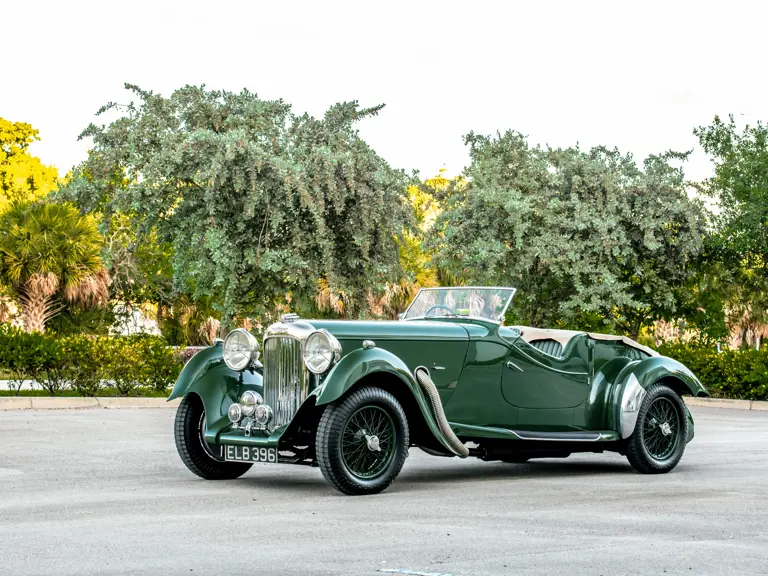

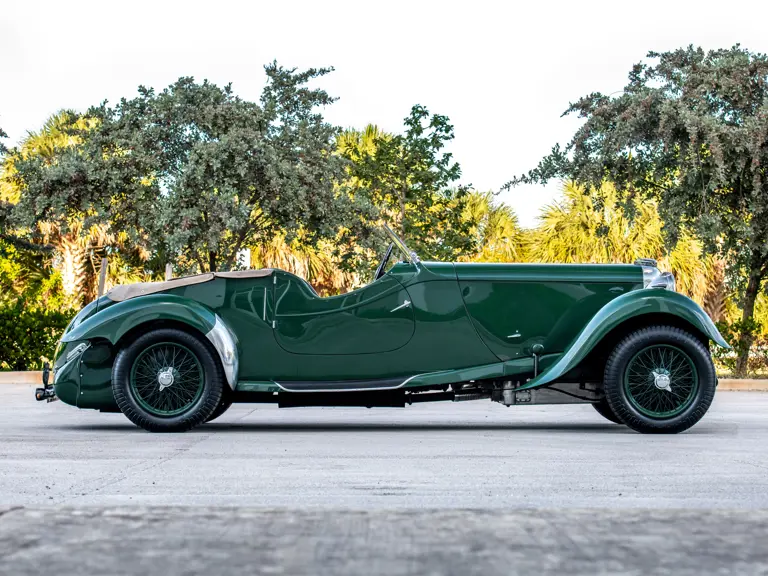

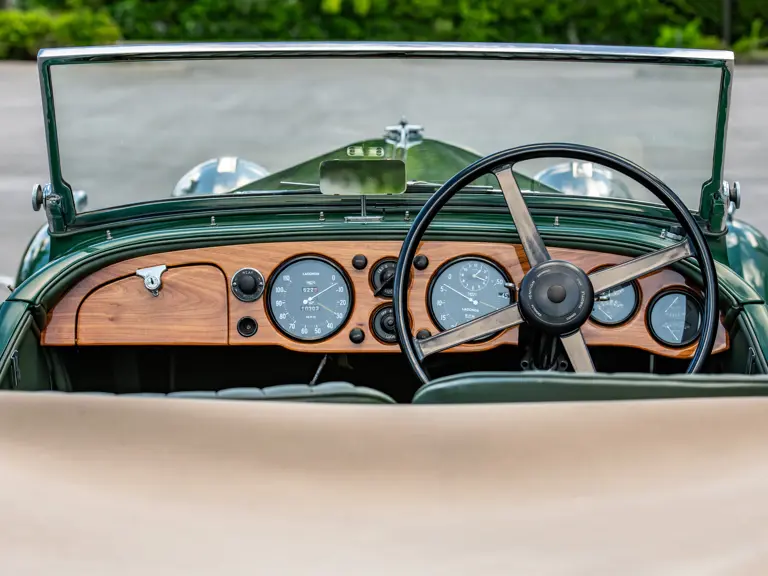
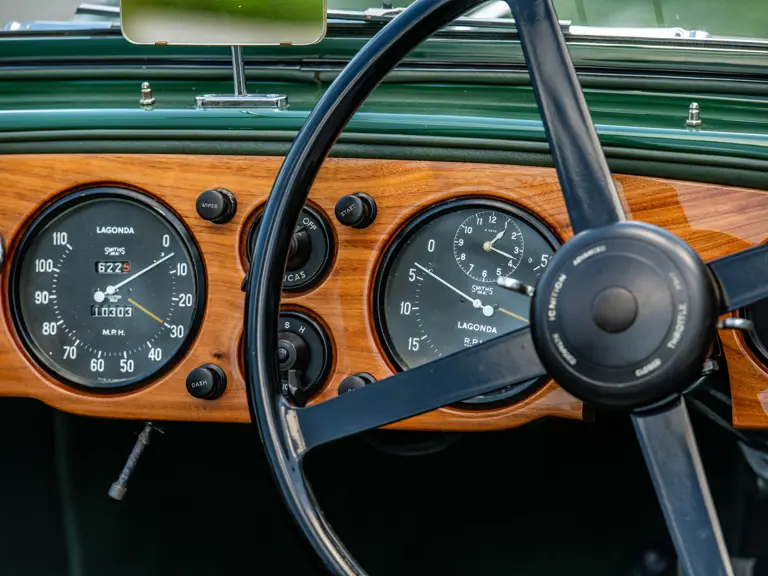
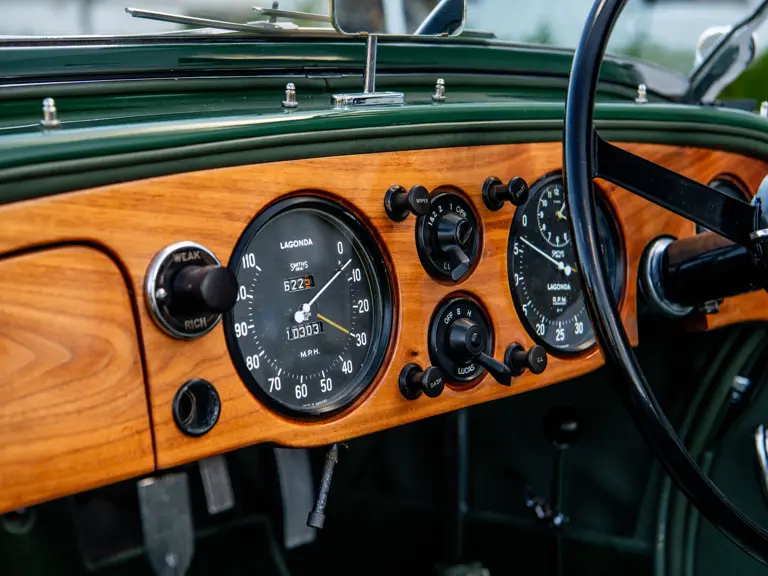
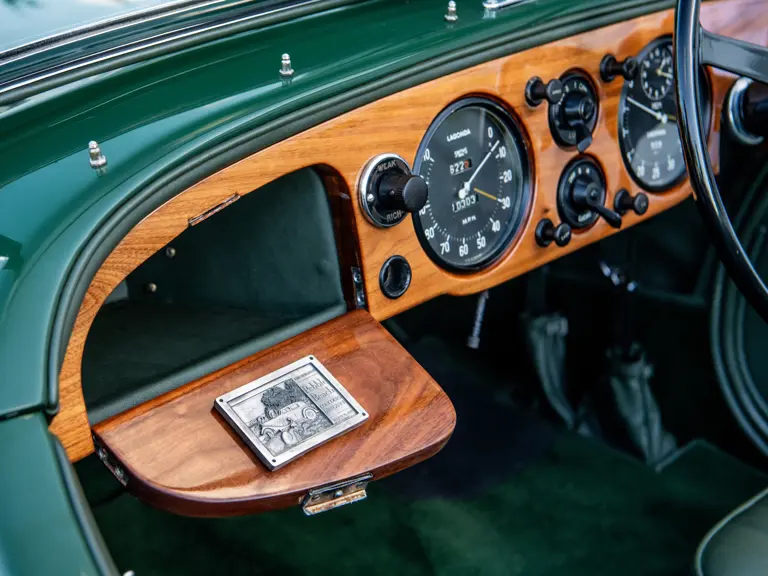
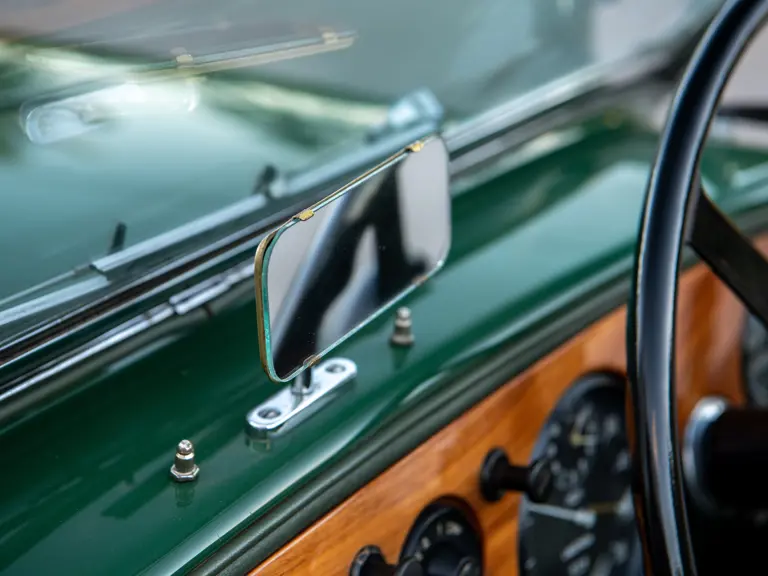

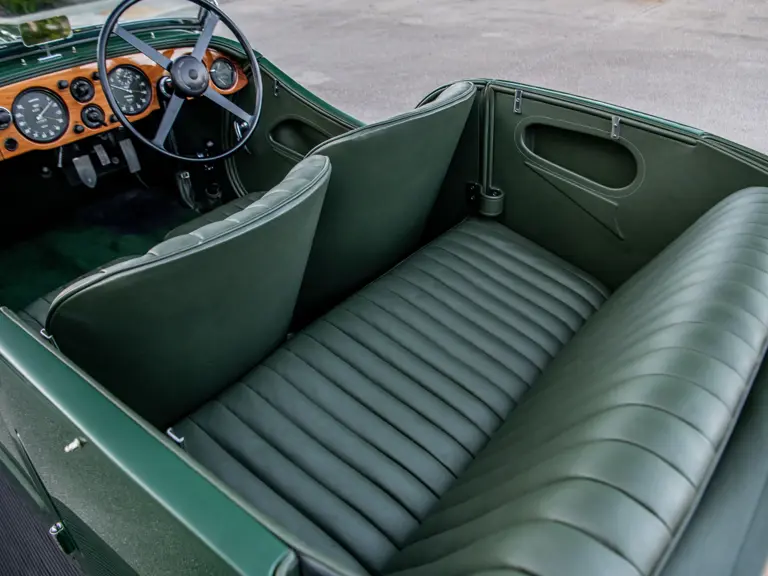
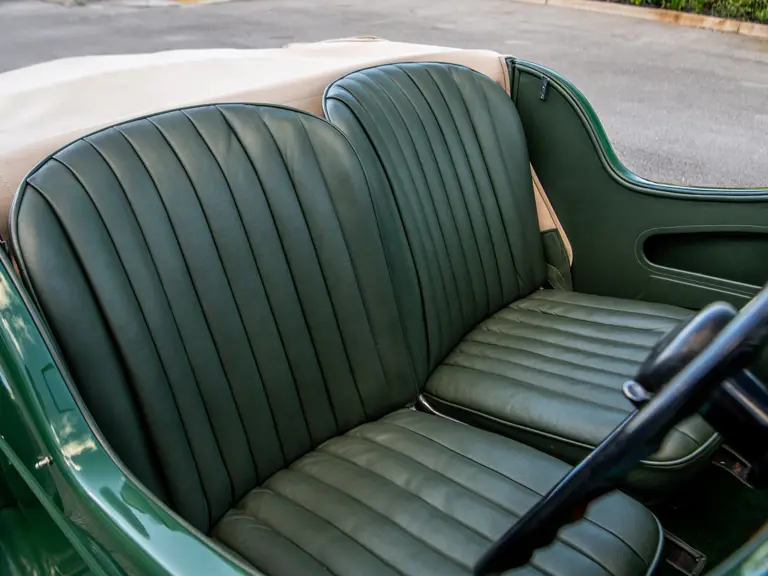
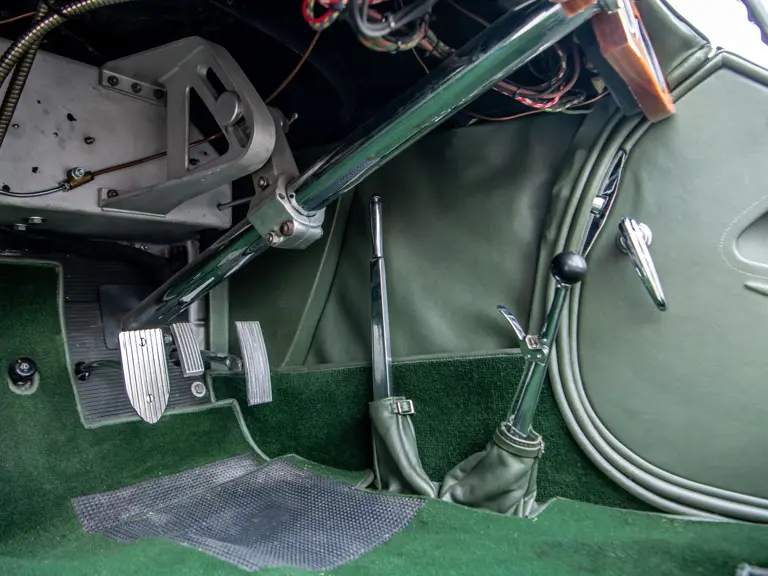
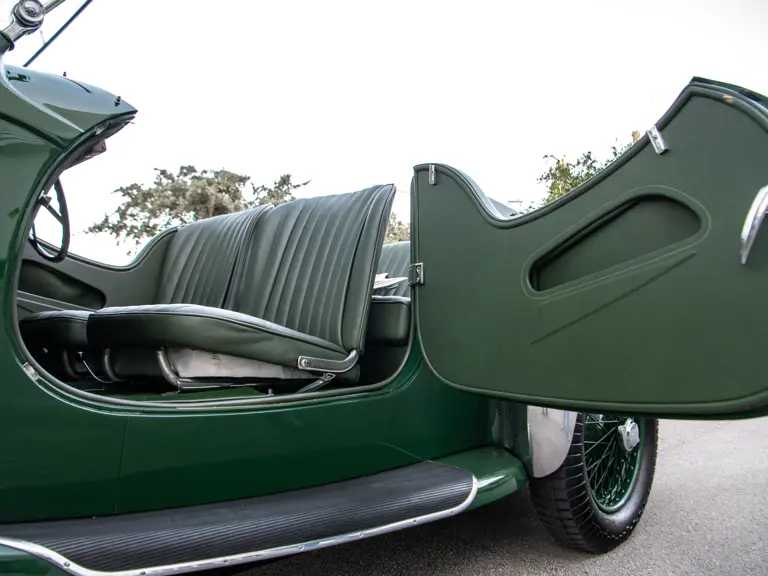
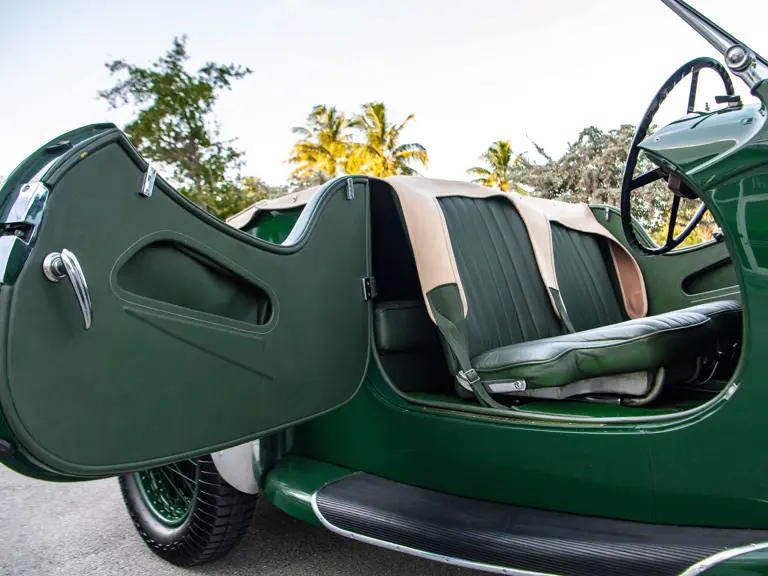
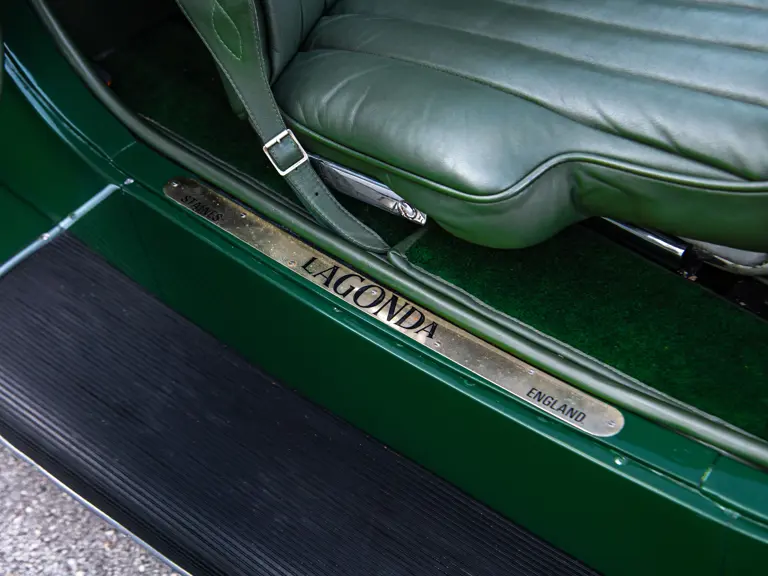
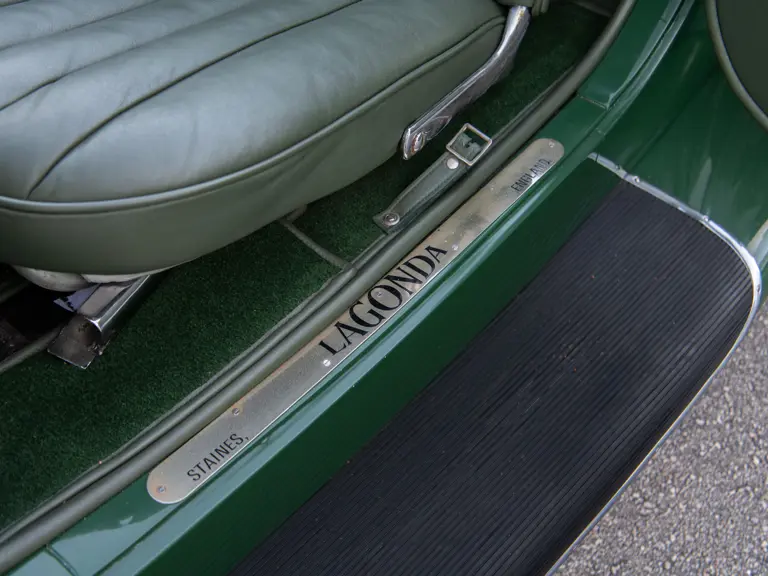

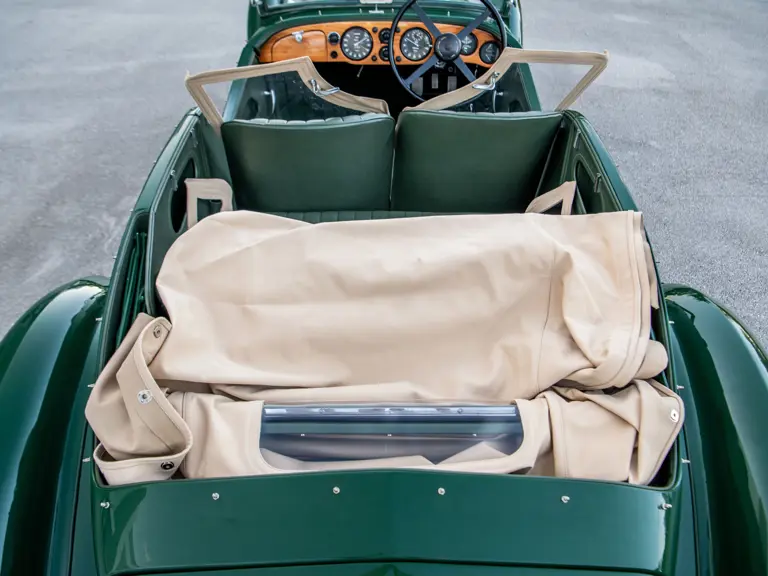
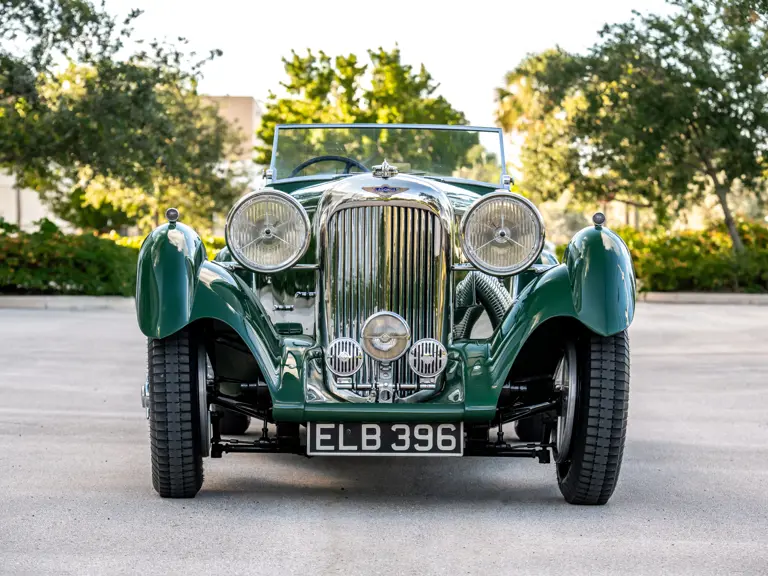
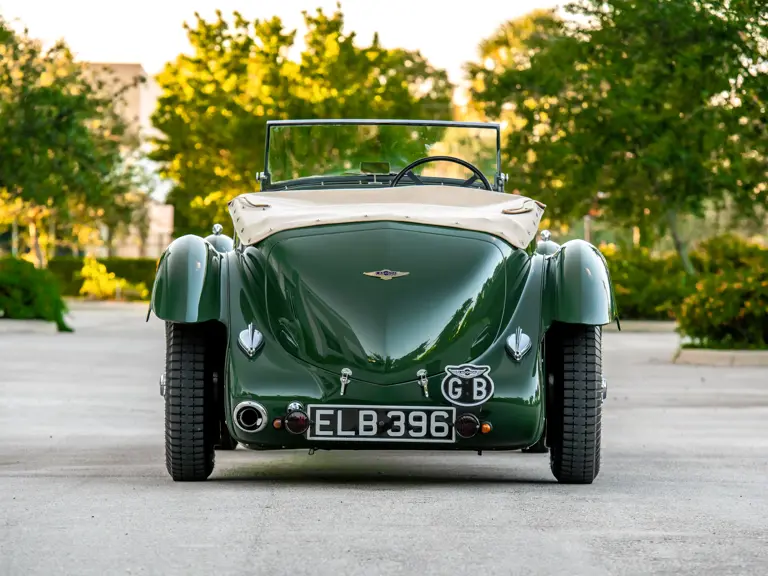
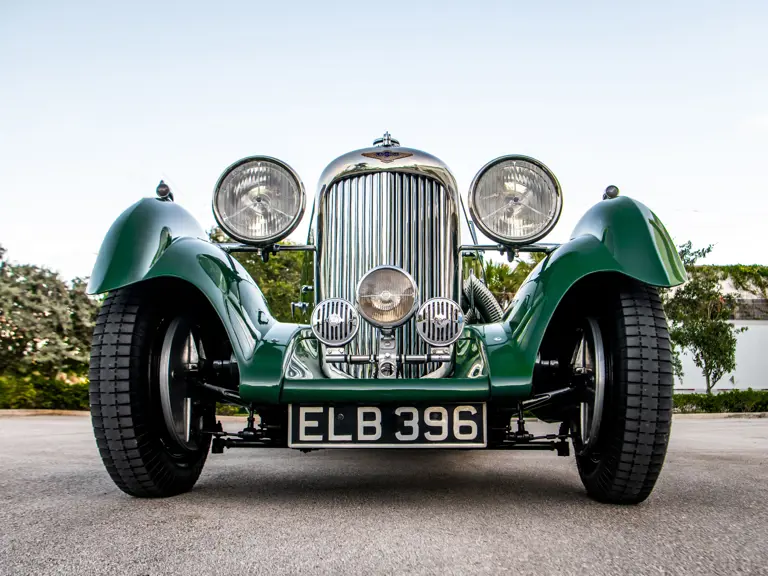
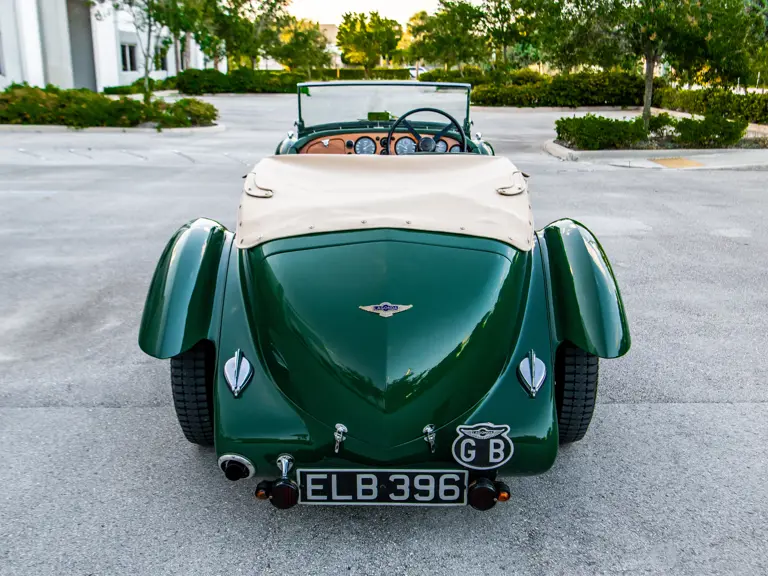

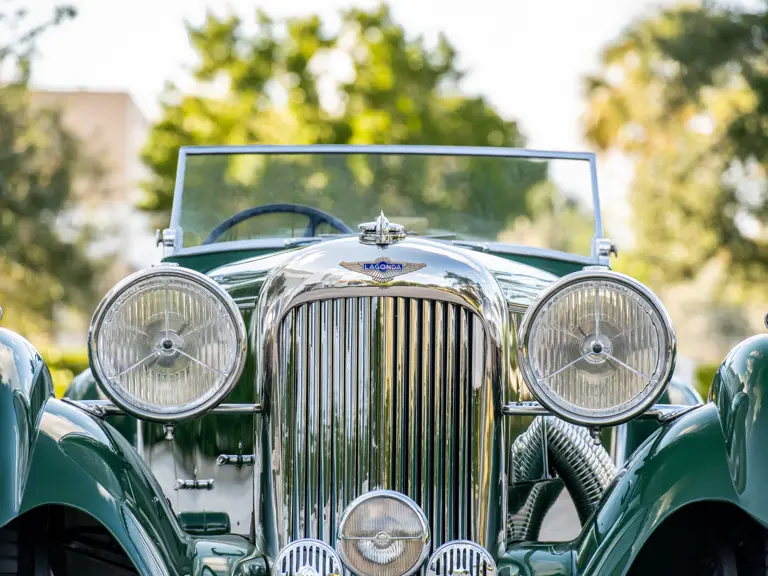
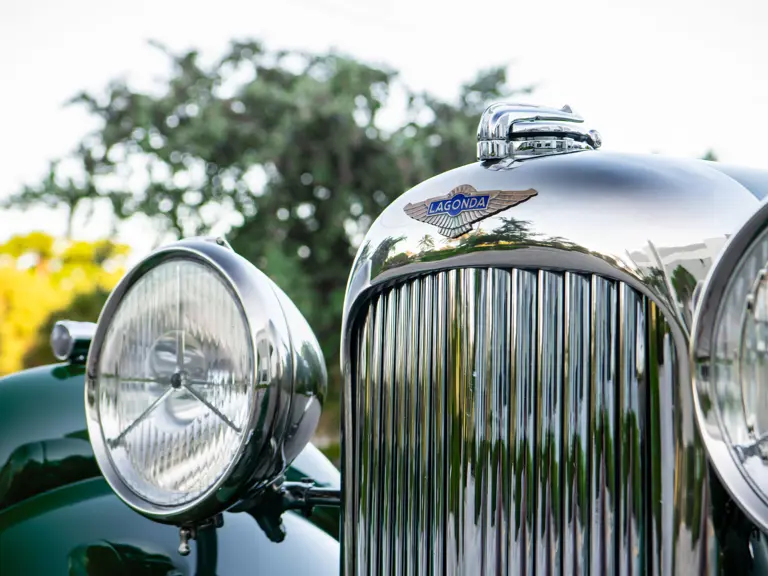
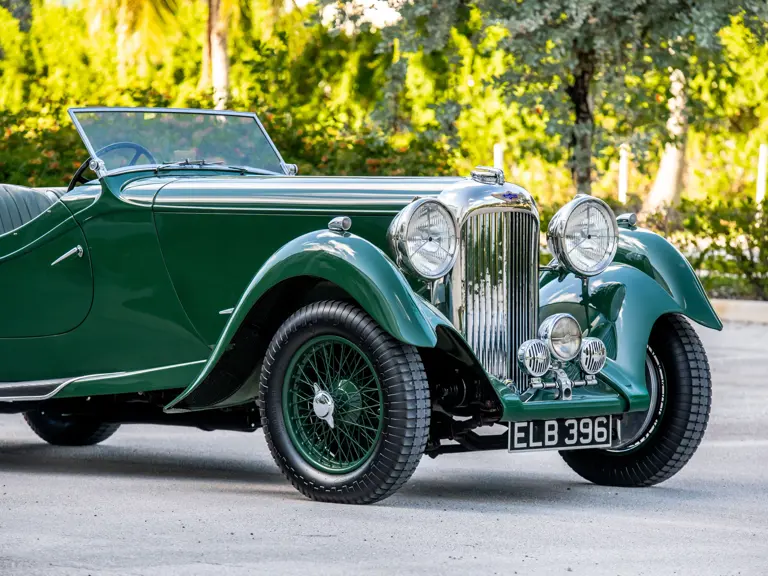
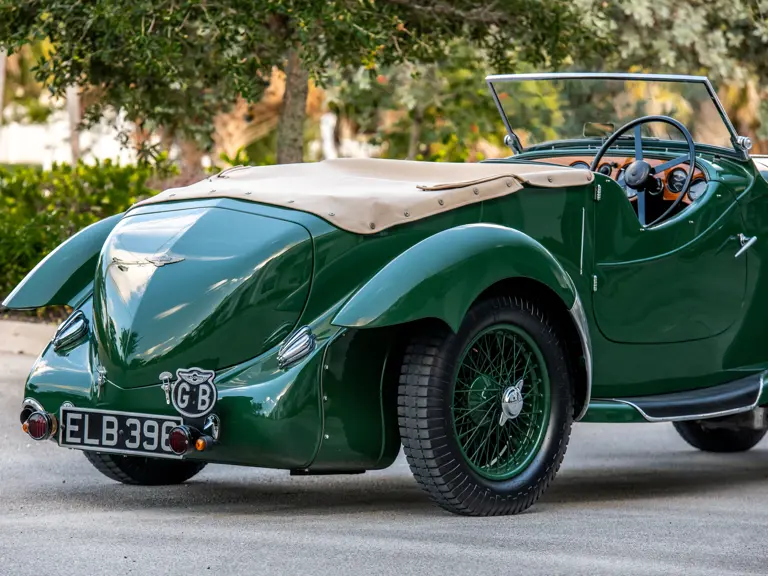
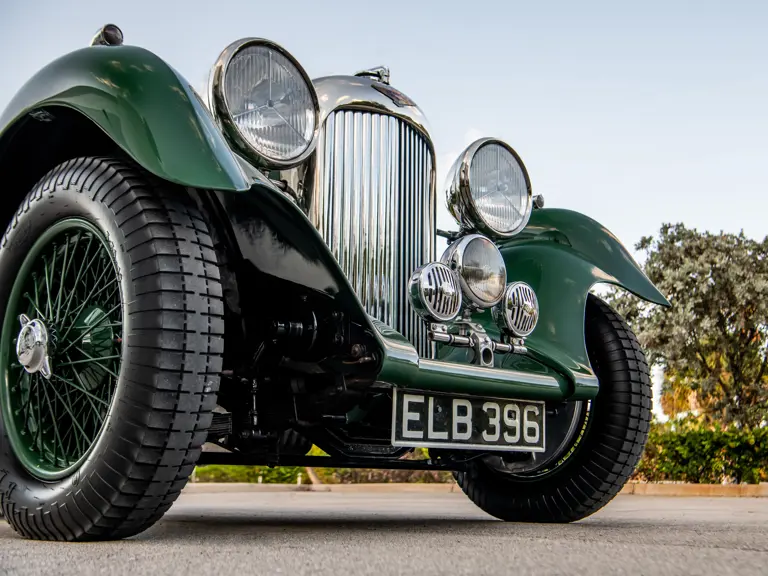
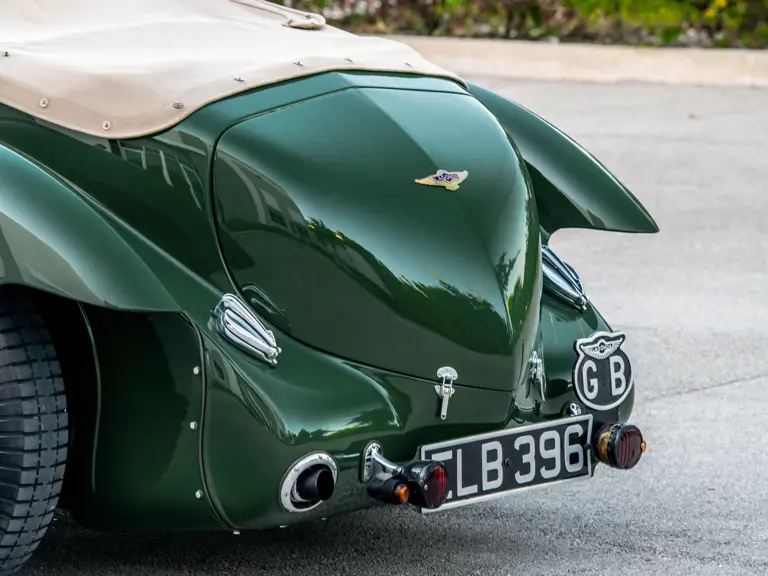
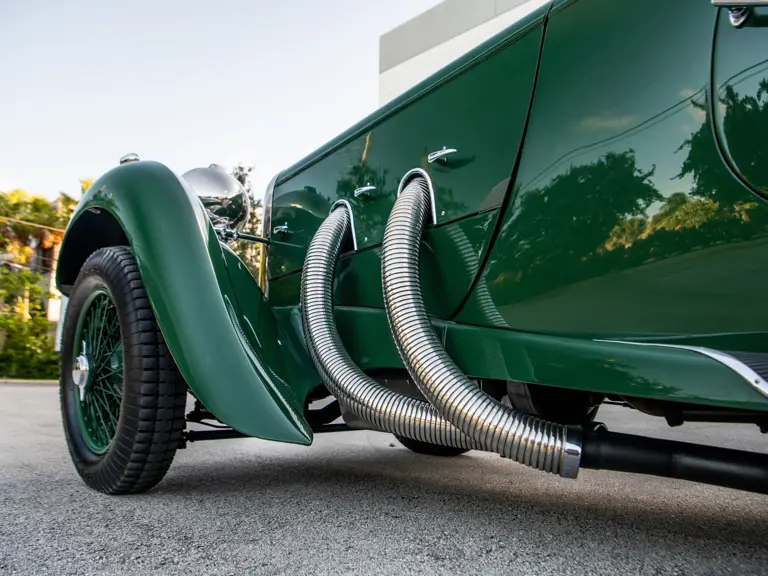
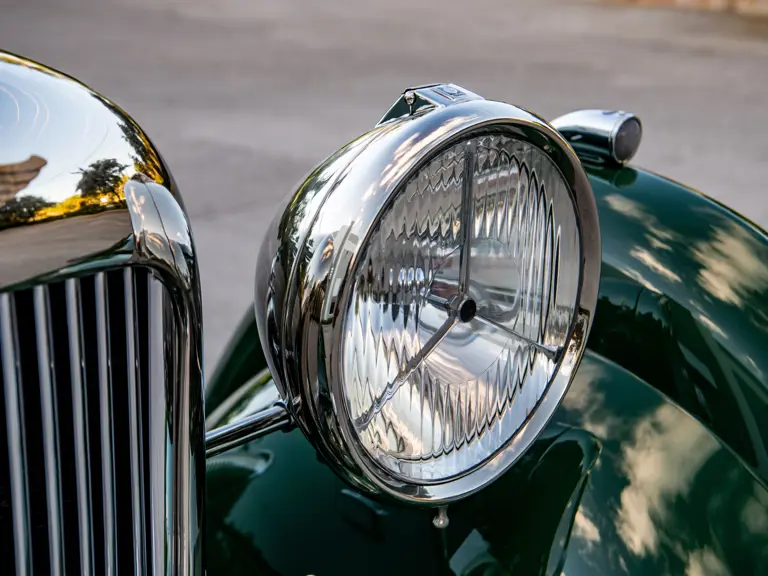
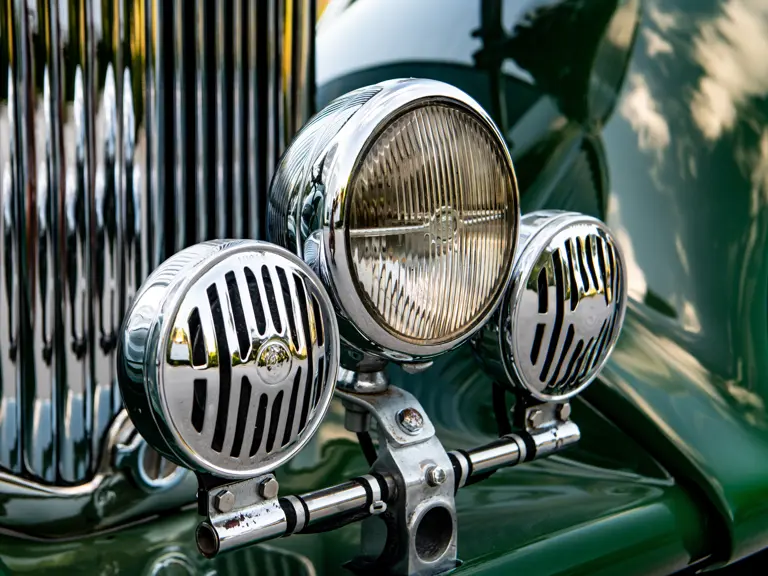
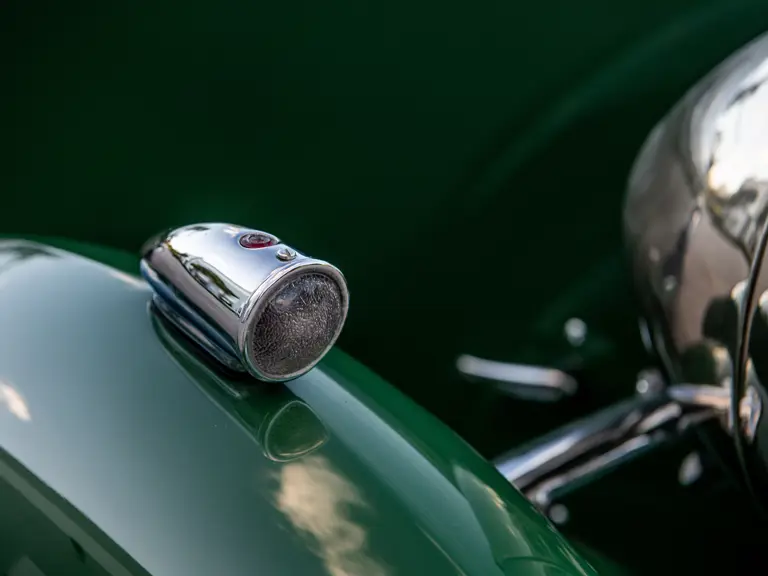
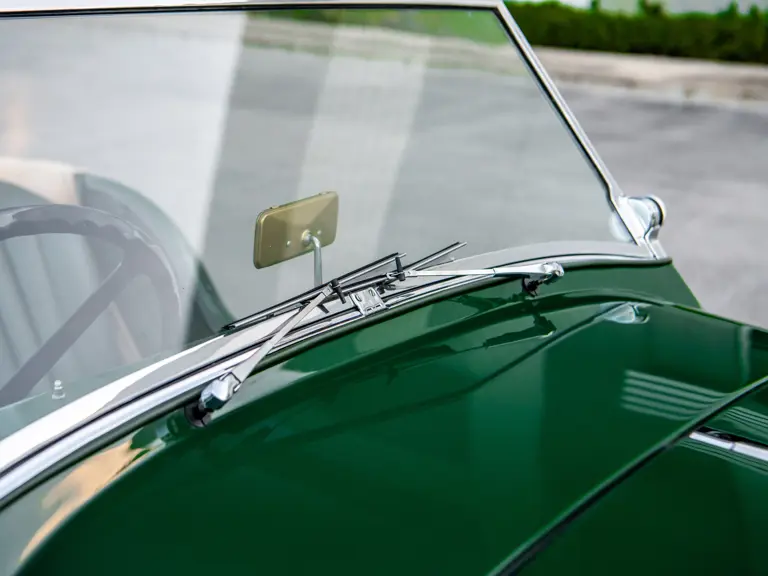

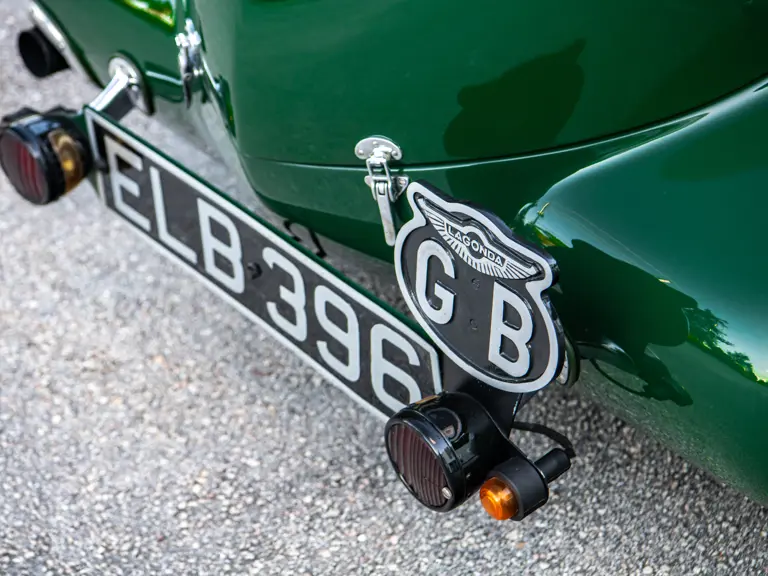
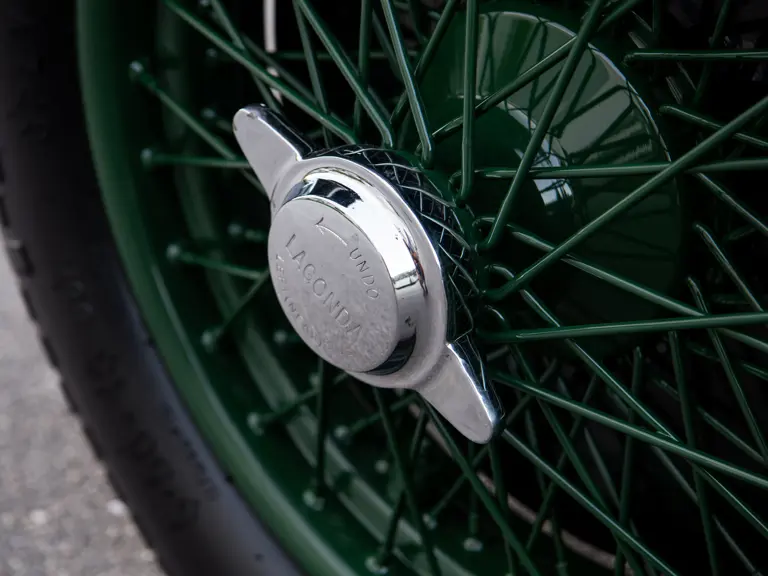
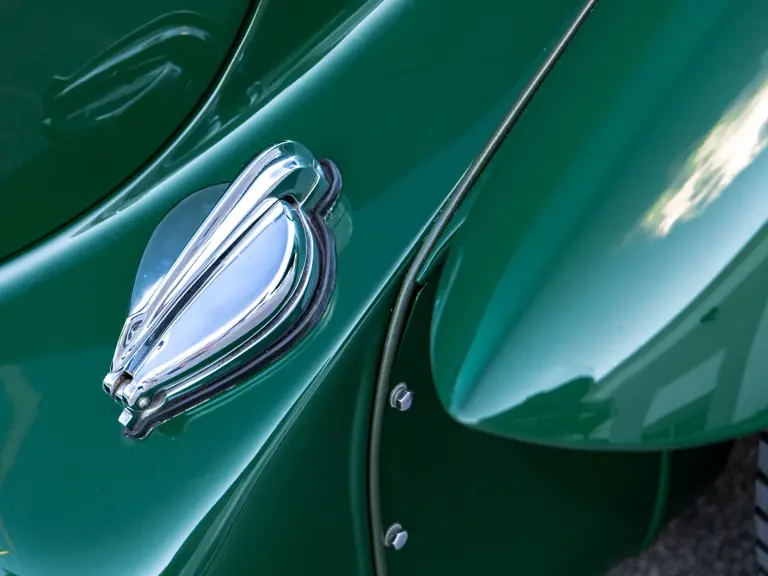
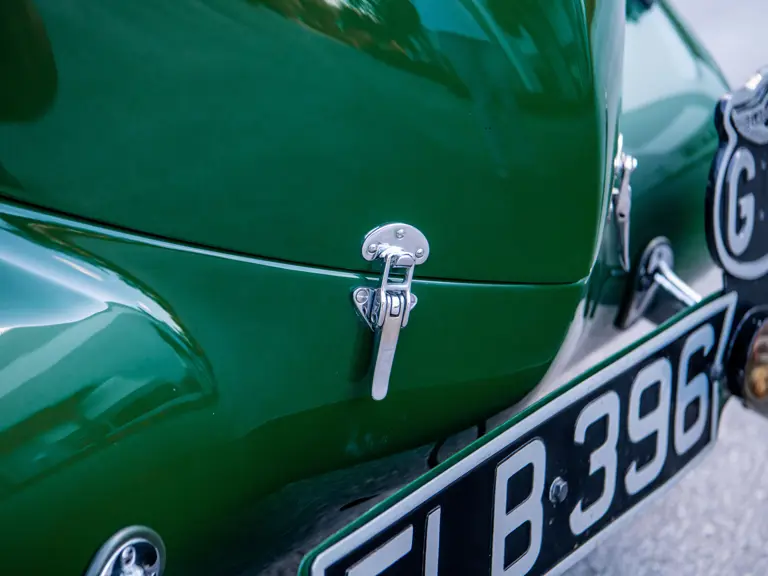
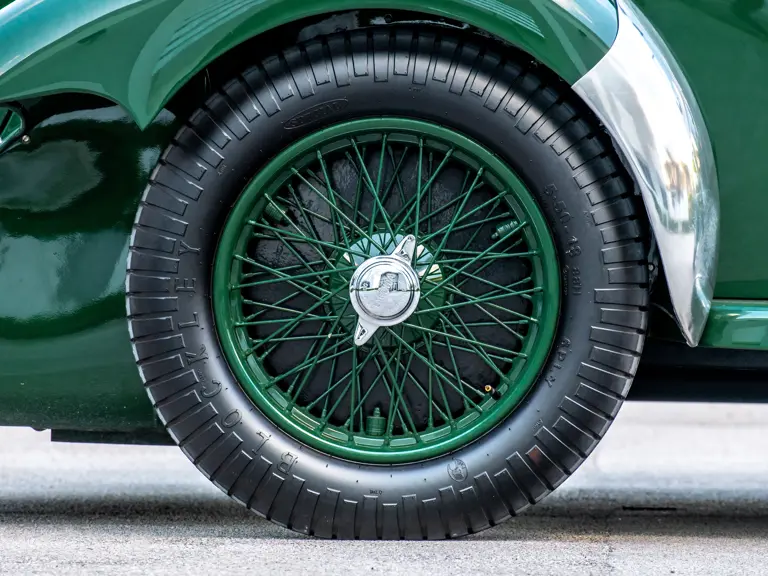
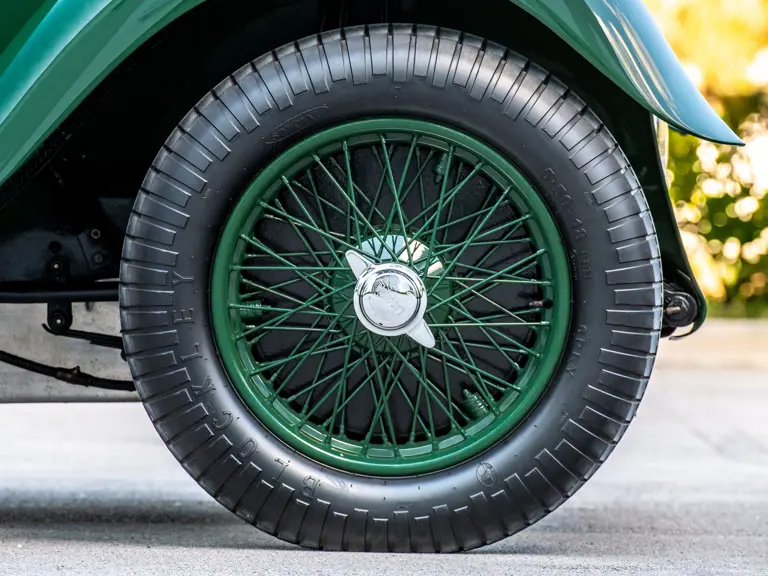
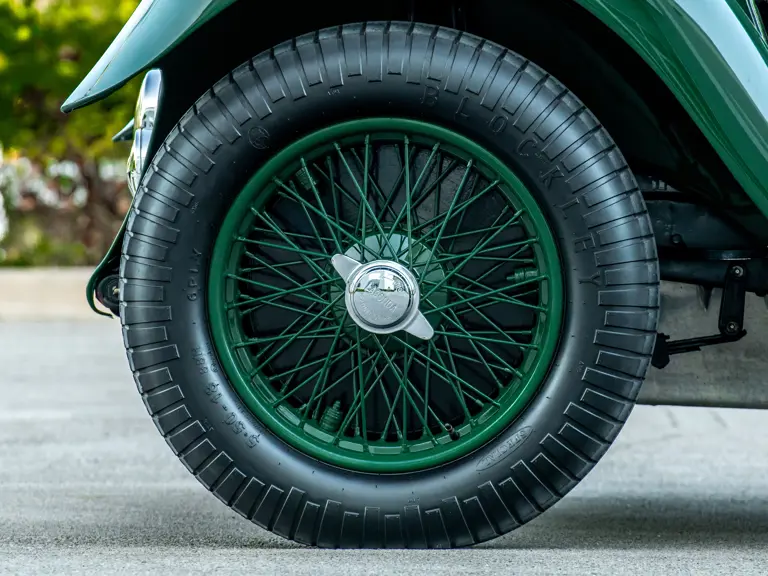
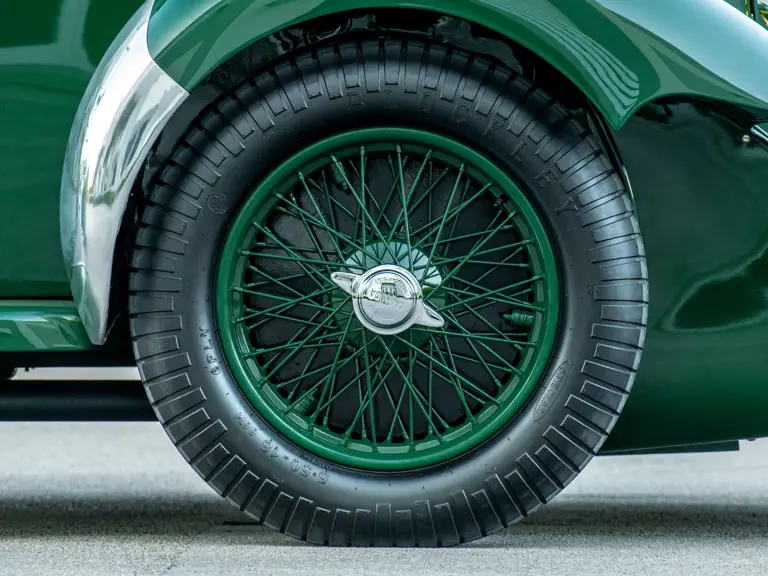
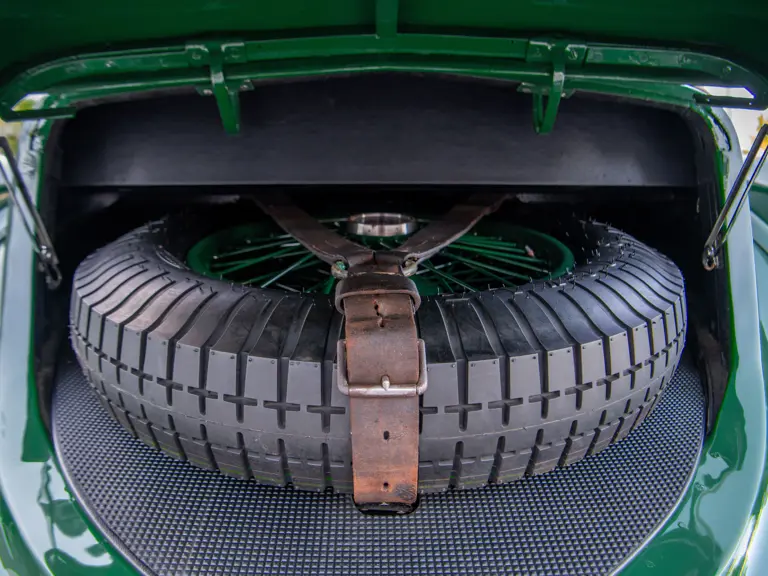

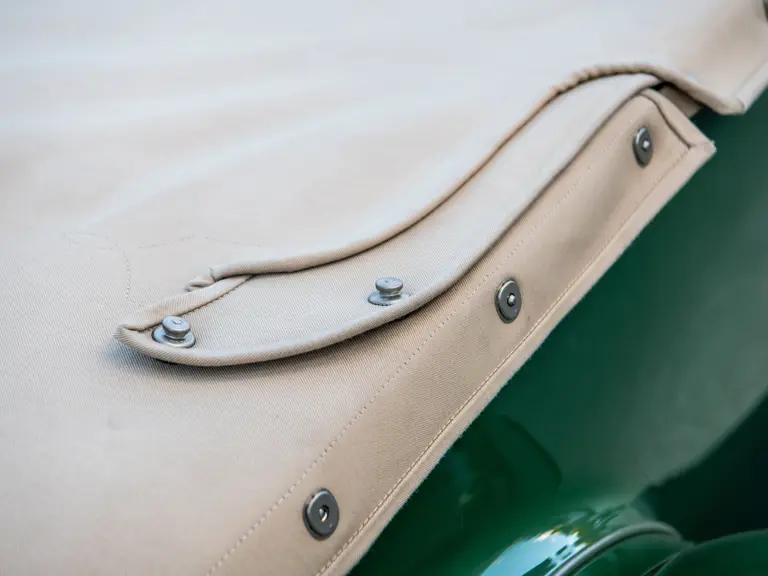
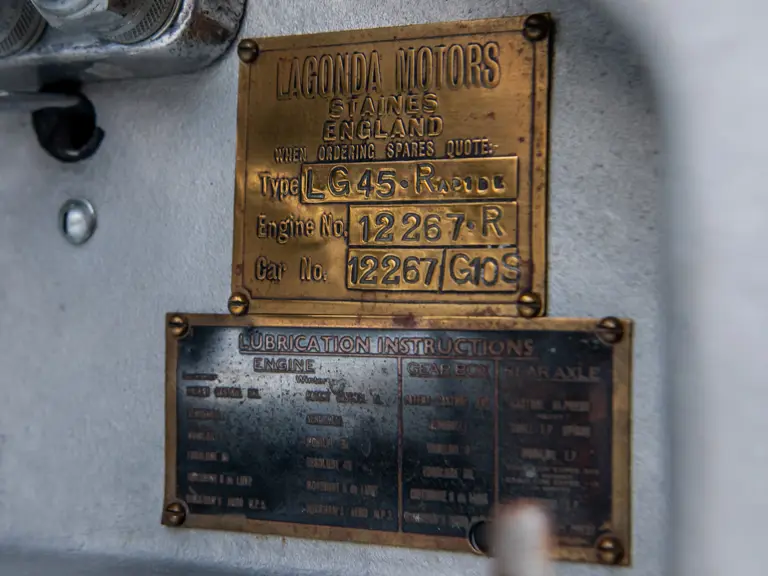
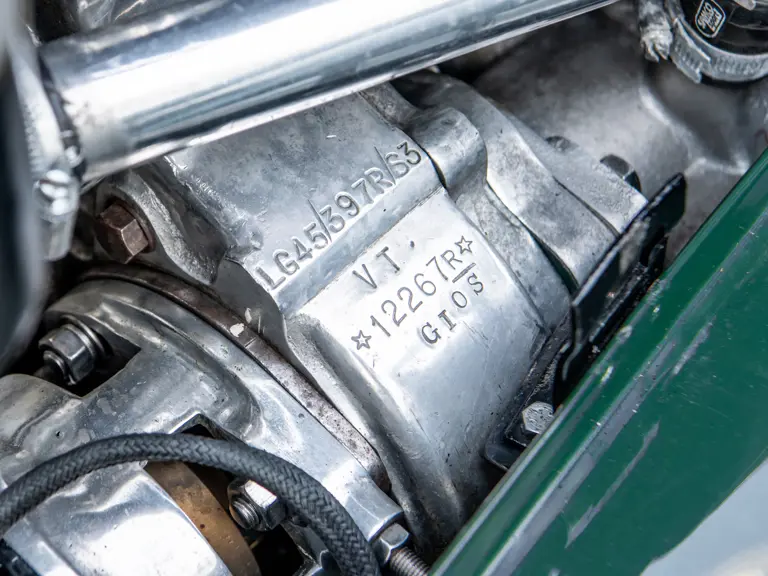
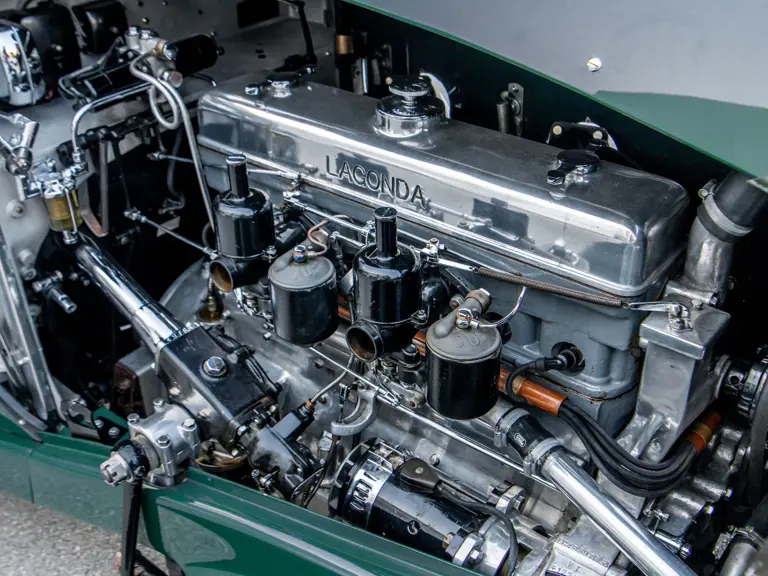
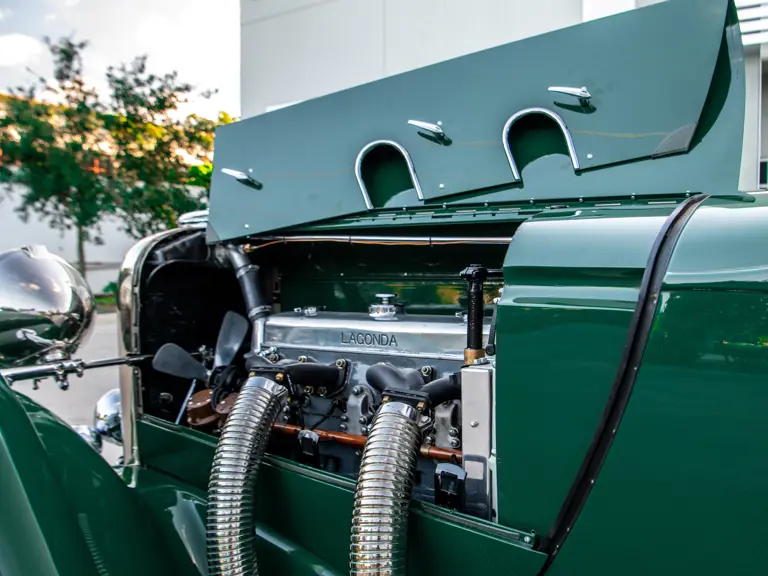
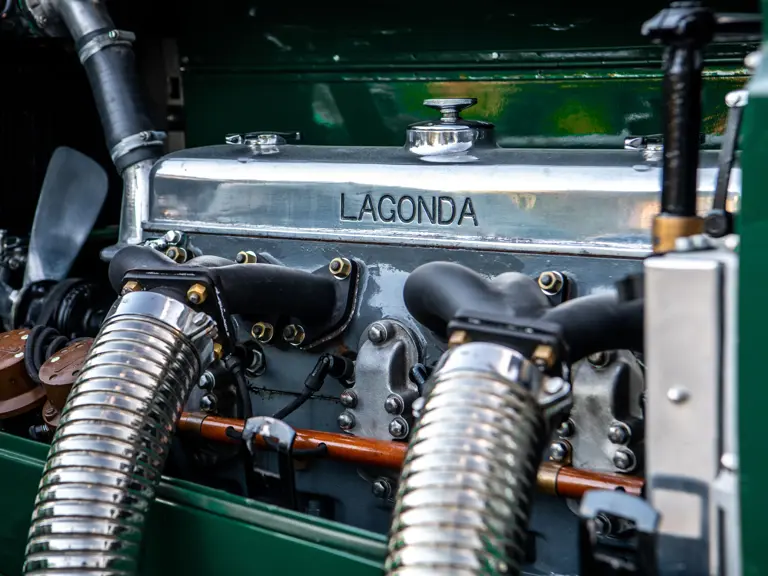

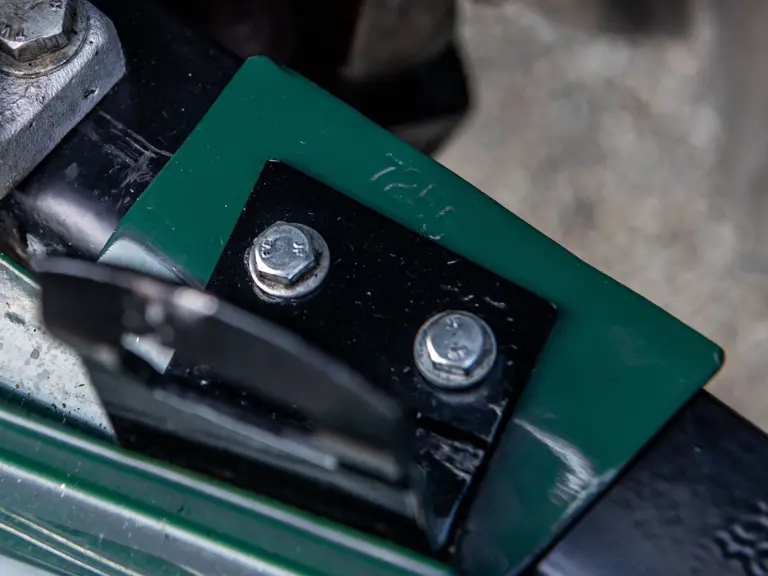
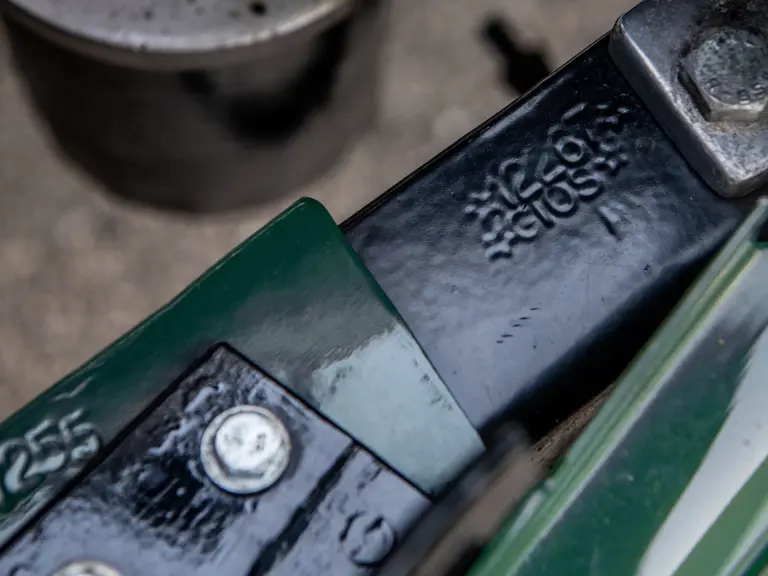
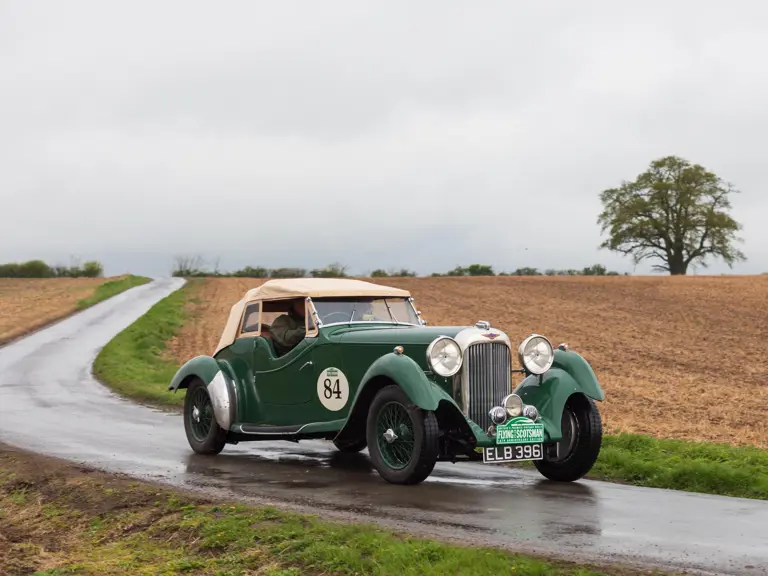
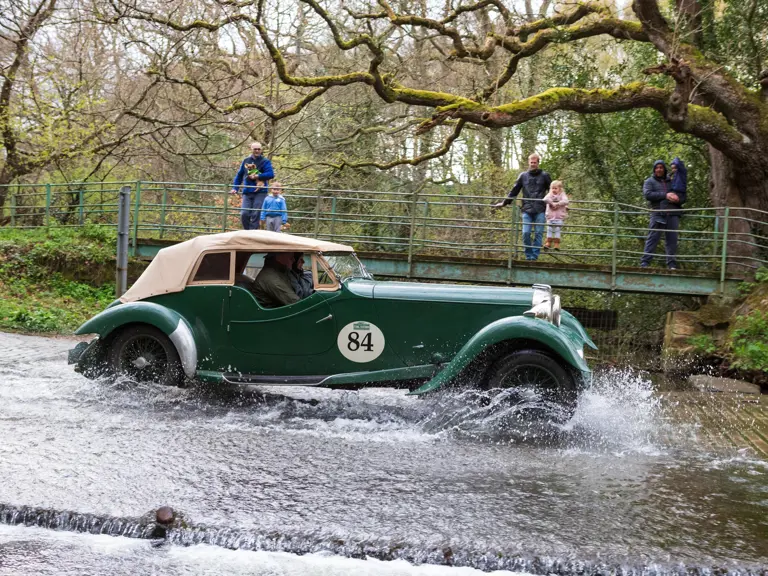
 | Monterey, California
| Monterey, California
